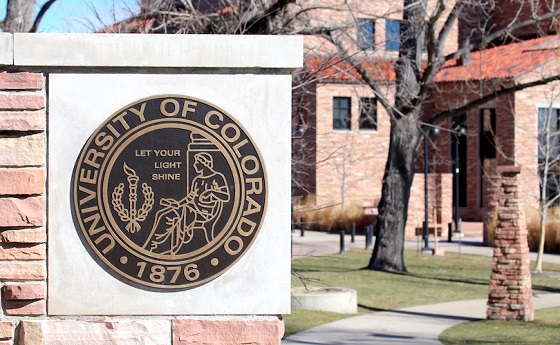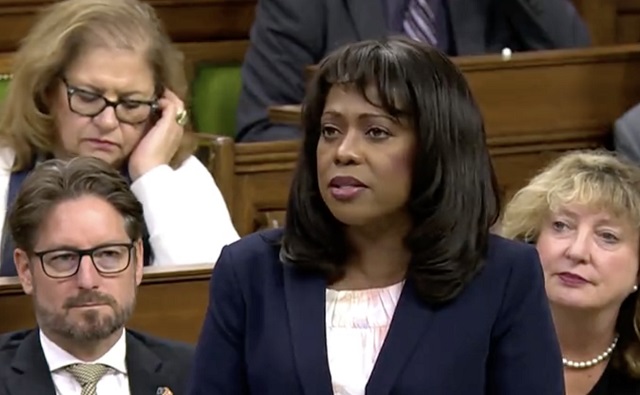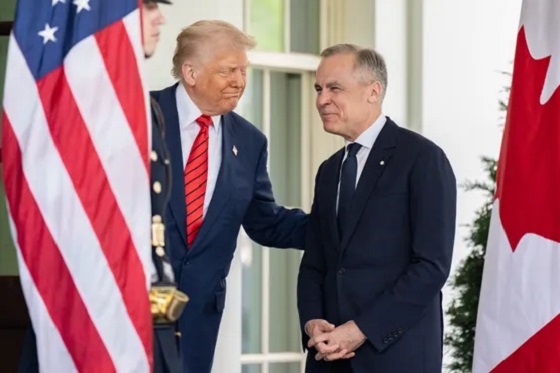illegal immigration
Exclusive Interview: Panama Border Security Chief Says Many U.S.-Bound Terror Suspects Caught in Darien Gap Region

SENAFRONT Director General Jorge Gabea at his headquarters office in Panama City, August 2024. Photo by Todd Bensman.
From the Center for Immigration Studies
By Todd Bensman
The bad news: The migrant flood prompted by Biden-Harris policies means only a tiny fraction can be checked
PANAMA CITY, Panama — In April 2022, the American public finally heard the sound of national security alarms about the U.S. southern border, when U.S. Customs and Border Protection began publishing, on a monthly basis, the numbers of FBI watch-listed terrorists caught illegally crossing (a record-breaking 378 from FY2021 through July 2024).
But what most Americans do not know is that many more terrorism suspects en route to the U.S. border could be added to that alarming number, except these ones were caught in Panama coming out of the notorious Darien Gap jungle, pulled off the migrant trails, and never accounted for in CBP’s public data reports.
New official information about these additional terrorism suspects interrupted on their way to the American border comes by way of an exclusive Center for Immigration Studies interview with the chief of Panama’s National Border Service (SENAFRONT), Director General Jorge Gabea, at agency headquarters just off the Panama Canal.
Asked to comment about SENAFRONT’s reported August arrest of three Afghan terror suspects whose biometrics were taken and checked at a Darien Province immigrant reception station (described in the SENAFRONT tweet below), Gabea responded that the report was “not fake”.
Se detecta a través de acciones de perfilamiento y pruebas biométricas a tres terroristas afganos y a tres colombianos con antecedentes criminales en la Estación Temporal de Recepción Migratoria de Lajas Blancas en Darién.#CentinelasDeLaPatria pic.twitter.com/xvnaMyBjOX
— SENAFRONT PANAMÁ (@senafrontpanama) August 3, 2024
Three Afghan terrorists and three Colombians with criminal records are detected through profiling actions and biometric tests at the Lajas Blancas Temporary Immigration Reception Station in Darién. #CentinelasDeLaPatria
“We did take and profile a few members of a terrorist cell from … Afghanistan,” he said. “We linked and we profiled them to be members of an active cell. They were members of a Salafist group, and they had links with different activities.”
But then Gabea added that this was far from a one-off.
“We have many stories of that. We don’t just have one. We have many stories of that, from Somalia, from Yemen … from Syria, from Africa.”
Gabea would not put a number on the “many stories”.
But for all those good-news stories of short-circuited U.S. border-crossings by known terrorist suspects, he also suggested that the record-breaking flood hundreds of thousands of migrants a year from 150-plus nations that began pouring through the Darien Gap from Colombia in 2021 has severely hampered the very counterterrorism screening programs that catch them and get them off the trails early.
”3 Percent in This Moment” — The Broken Counterterrorism Dam. I knew exactly what Gabea was talking about. Following a previous trip to Panama in 2018, I produced reporting about those counterterrorism programs. This was several years before the historic mass migration event that the Biden-Harris administration would unleash starting in 2021. (See 2019 video below.)
Since 2011, SENAFRONT has worked closely with in-country FBI and DHS agents on counterterrorism programs that use U.S.-provided equipment to collect migrant biometrics like fingerprints and photos and run them through terrorism databases looking for positive hits before the foreign nationals move on north.
But SENAFRONT’s director general indicated that so many began coming through the gap during the historic mass migration to the U.S. border that Central American authorities are scarcely able to screen even a fraction of them.
“Maybe at this moment … we can check like 3 percent and, in the worst moment, 1 percent,” Gabea told me. “We don’t have the capability to screen everybody.”
So many are coming that agents on the ground are left to “profile” immigrants for priority collection and checks, probably meaning if they are young men from Muslim-majority nations. But eyeballing always eludes perfection.
”Throughout the Years, We Were Catching a Lot … Hundreds.” This profound reduction in coverage to 1 percent or 3 percent in Panama stands in contrast with a 90-percent rate of screening immigrants in the country when the program started in 2011, when flows were usually well under 10,000 per year.
This is according to Edward Dolan, a former Homeland Security Investigations agent who worked deeply with these programs while later serving as DHS’s Regional Attache for Central America in the U.S. embassy in Panama City. Dolan retired from service in 2019 but still lives and works in Panama, where I met with him in a coffee shop.
“Throughout the years, we were catching a lot” of watch-listed terrorists, Dolan told me. “From like 2015 to 2019, it was hundreds.”
But checking the 550,000 immigrants that crossed in just 2023 and almost 250,000 so far in 2024?
“That’s insurmountable,” Dolan said. “I can’t imagine trying to manage what they have now.”
Dolan said those low screening rates in Panama help explain the record-high number of terror suspects getting caught and counted illegally crossing the U.S. border.
“All you have to do is look at what’s being reported at the southwest border and then go back and look at the numbers in 2019 [zero] and 2020 [three],” Dolan said. “That tells the story itself.”
Delayed Counterterrorism Responses from Colombia to Texas. So many are coming in through the Darien Gap, Gabea confirmed, that “active terrorist” migrants are sometimes mistakenly freed to proceed to countries north before biometric information submitted in Panama produces a positive hit.
A red flag goes out then, of course, and with a little luck, “they take them from the migrant flow”, Gabea explained, for interviews with American and local agents, the eventual deportation to “their official port of entry. Maybe it’s in Africa. Maybe it’s Bosnia. We return them to their previous position.”
Clearly, however, many are too long gone and don’t get caught until they hit the American border, if ever. On August 5, the U.S. House Judiciary Committee issued an interim report revealing that since January 2021, CPB released into the United States “at least” 99 border-crossing immigrants who were on the FBI’s terrorist watchlist database.
The entire multinational counterterrorism net now stands reduced in capability, and the bad guys know it, Dolan said.
“If you’re a terrorist,” he said. “this is how you’re going to come to the United States.”
The Center for Immigration Studies is an independent, non-partisan, non-profit research organization founded in 1985. It is the nation’s only think tank devoted exclusively to research and policy analysis of the economic, social, demographic, fiscal, and other impacts of immigration on the United States.
illegal immigration
While Trump has southern border secure, hundreds of thousands of illegal immigrants still flooding in from Canada

From The Center Square
By
Under the Biden administration, the greatest number of illegal border crossers at the U.S.-Canada border were reported in U.S. history, breaking records nearly every month for four years, The Center Square first reported.
While record high numbers dropped under the Trump administration, illegal entries still remain high in northern border states, with some states reporting more apprehensions in 2025 than during the Biden years.
Fourteen U.S. states share the longest international border in the world with Canada, totaling 5,525 miles across land and water.
The majority of illegal border crossers were apprehended and encountered in five northern border states, according to U.S. Customs and Border Protection data analyzed by The Center Square. Nearly half were reported in New York. Washington, Vermont, Maine and Montana recorded the next greatest numbers.
The majority of northern border states reported the greatest number of illegal entries in U.S. history in 2024, the last year of the Biden administration, according to CBP data. At the height of the border crisis, illegal entries reached nearly 200,000 at the northern border in 2024 and in 2023, first reported by The Center Square.
For fiscal years 2022 through 2025, 754,928 illegal border crossers were reported in 14 northern border states, according to the latest available CBP data.
From west to east, illegal entries at the northern border totaled:
-
Alaska: 7,380
-
Washington: 135,116
-
Idaho: 620
-
Montana: 32,036
-
North Dakota: 14,818
-
Minnesota: 8,315
-
Wisconsin: 118
-
Michigan: 50,321
-
Ohio: 1,546
-
Pennsylvania: 19,145
-
New York: 363,910
-
Vermont: 61,790
-
New Hampshire: 82
-
Maine: 59,731
Notably, Alaska, Idaho, New York, Pennsylvania and Wisconsin reported record high illegal crossings in 2023. Although Montana and North Dakota saw a drop in 2025 from record highs in 2024, the number of illegal border crossers apprehended in the two states in 2025 were greater than they were in 2022; in Montana they were more than double.
The data only includes nine months of the Trump administration. The CBP fiscal year goes from Oct. 1 through Sept. 30. Biden administration data includes the first three months of fiscal 2025, nine months of fiscal 2021, and all of fiscal years 2022, 2023 and 2024. Combined, illegal northern border crosser apprehensions totaled roughly one million under the Biden administration, according to CBP data.
The data excludes “gotaways,” the official term used by CBP to describe foreign nationals who illegally enter between ports of entry to evade capture, don’t make immigration claims and don’t return to their country of origin. CBP does not publicly report gotaway data. The Center Square exclusively obtained it from Border Patrol agents. More than two million gotaways were identified by Border Patrol agents under the Biden administration, although the figure is expected to be much higher, The Center Square first reported.
For decades, the northern border has been largely unmanned and unprotected with increased threats of terrorism and lack of operational control, The Center Square reported.
Unlike the 1,954-mile U.S.-Mexico border, there is no border wall, significantly less technological equipment exists and far fewer agents are stationed there.
Officials have explained that the data represents a fraction of illegal border crossers – it remains unclear how many really came through largely remote areas where one Border Patrol agent may be responsible for patrolling several hundred miles, The Center Square has reported.
Despite being understaffed and having far less resources, Border Patrol and CBP agents at the U.S.-Canada border apprehended the greatest number of known or suspected terrorists (KSTs) in U.S. history during the Biden administration – 1,216, or 64% of the KSTs apprehended nationwide, The Center Square exclusively reported.
In February, President Donald Trump for the first time in U.S. history declared a national emergency at the northern border, also ordering the U.S. military to implement border security measures there. After shutting down illegal entries at the southwest border, the administration acknowledged the majority of fentanyl and KSTs were coming through the northern border, The Center Square reported.
The Trump administration has also prioritized increased funding, recruitment and hiring and investment in technological capabilities at the northern border.
Daily Caller
Tom Homan Predicts Deportation Of Most Third World Migrants Over Risks From Screening Docs


From the Daily Caller News Foundation
White House border czar Tom Homan predicted Sunday the Trump administration will deport the majority of Third World migrants due to vetting challenges.
Two National Guardsmen were shot Wednesday, allegedly by an Afghan national brought into the U.S. under the Biden administration. The attack prompted President Donald Trump to announce in a Thursday post on Truth Social that his administration would “permanently pause migration from all Third World Countries.” Homan said on Fox News’s “Sunday Morning Futures” that Third World nations could not be relied upon to provide accurate information for vetting migrants.
Dear Readers:
As a nonprofit, we are dependent on the generosity of our readers.
Please consider making a small donation of any amount here.
Thank you!
“[T]hese Third World nations, they don’t have systems like we do. So, a lot of these Afghanistans, when they did get here and get vetted, they had no identification at all. Not a single travel document, not one piece of identification,” Homan said. “And we’re going to count on the people that run Afghanistan, the Taliban, to provide us any information [on] who the bad guys were or who the good guys are? Certainly not. And many people need to understand that most terrorists in this world, most of ’em, aren’t in any database.”
“And the same thing with illegal aliens, the over 10 million that came across the border under Joe Biden. There’s no way to vet these people. You think El Salvador or Turkey or Sudan or any of these countries have the databases or system checks that we have?” he added. “Do you think the government[s] of China, Russia, Turkey, do you think they’re going to share that data with us even if they did have it? There’s no way to clearly vet these people 100% that they’re safe to come to this country from these Third World nations.”
The president also wrote in his Thursday post he would “terminate all of the millions of Biden illegal admissions,” along with deporting those who do not offer value to the United States. Homan said Trump is correct to evaluate all migrants who entered under Biden.
“I really, truly think that most of ’em are [going to] end up being deported ’cause we’re not going to be able to properly vet them,” he said.
Similarly, Homeland Security Secretary Kristi Noem asserted Sunday on NBC News’s “Meet the Press” the Trump administration would deport individuals with pending asylum claims.
West Virginia Army National Guard Specialist Sarah Beckstrom, 20, perished Thursday from wounds sustained in Wednesday’s shooting. The other victim, Air Force Staff Sgt. Andrew Wolfe, remains in critical condition at the time of publication.
The shooting was allegedly carried out by Rahmanullah Lakanwal, who entered the country in September 2021 after the U.S. military’s withdrawal from Afghanistan. Lakanwal previously worked with the U.S. government, including the CIA, and was admitted into the U.S. under the Biden administration’s Operation Allies Welcome, which resettled Afghans who had helped American forces.
Lakanwal applied for asylum in 2024, which the Trump administration granted in April 2025, according to Reuters. The alleged gunman shouted, “Allahu akbar!” before opening fire with a revolver, independent journalist Julio Rojas reported.
As of December 2024, over 180,000 Afghans were resettled in the U.S. following its August 2021 withdrawal, according to the State Department. After the shooting, the U.S. Citizenship and Immigration Services (USCIS) announced that the “processing of all immigration requests relating to Afghan nationals” would be paused “indefinitely.”
USCIS also asserted Thursday it would conduct a full-scale reexamination of all green cards granted to individuals from 19 countries “of concern” at Trump’s direction. The agency added in a later statement that, when vetting migrants from those nations, it would weigh “negative, country specific factors,” such as whether the country was able to “issue secure identity documents.”
-

 Energy16 hours ago
Energy16 hours agoA look inside the ‘floatel’ housing B.C.’s LNG workforce
-

 International1 day ago
International1 day agoFBI may have finally nabbed the Jan. 6 pipe bomber
-

 COVID-191 day ago
COVID-191 day agoUniversity of Colorado will pay $10 million to staff, students for trying to force them to take COVID shots
-

 Business2 days ago
Business2 days agoCanada’s climate agenda hit business hard but barely cut emissions
-

 espionage1 day ago
espionage1 day agoDigital messages reportedly allege Chinese police targeted dissident who died suspiciously near Vancouver
-

 Energy16 hours ago
Energy16 hours agoELZABETH MAY HAS IT WRONG: An Alberta to Prince Rupert Oil Pipeline Will Contribute to Greater Global Oil Tanker Safety
-

 Alberta2 days ago
Alberta2 days agoAlberta Sports Hall of Fame Announces Class of 2026 Inductees
-

 Censorship Industrial Complex2 days ago
Censorship Industrial Complex2 days agoConservative MP Leslyn Lewis slams Liberal plan targeting religious exemption in hate speech bil


